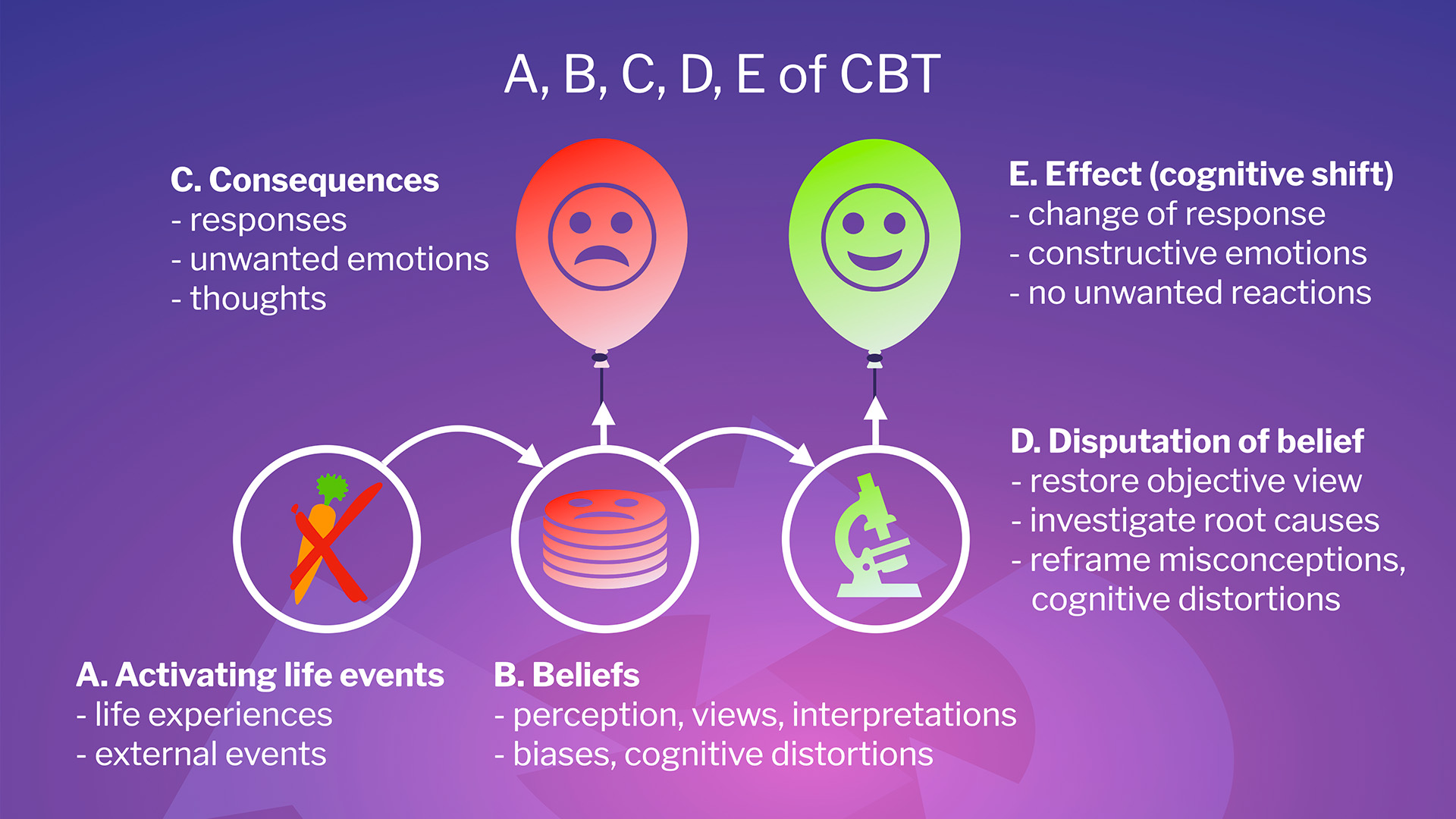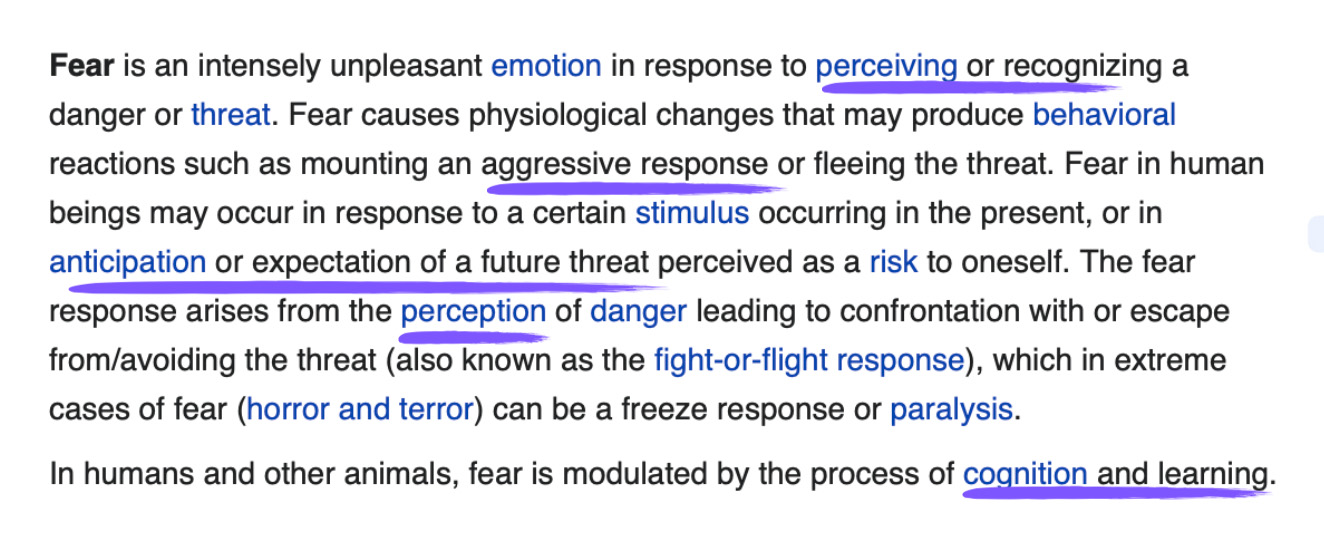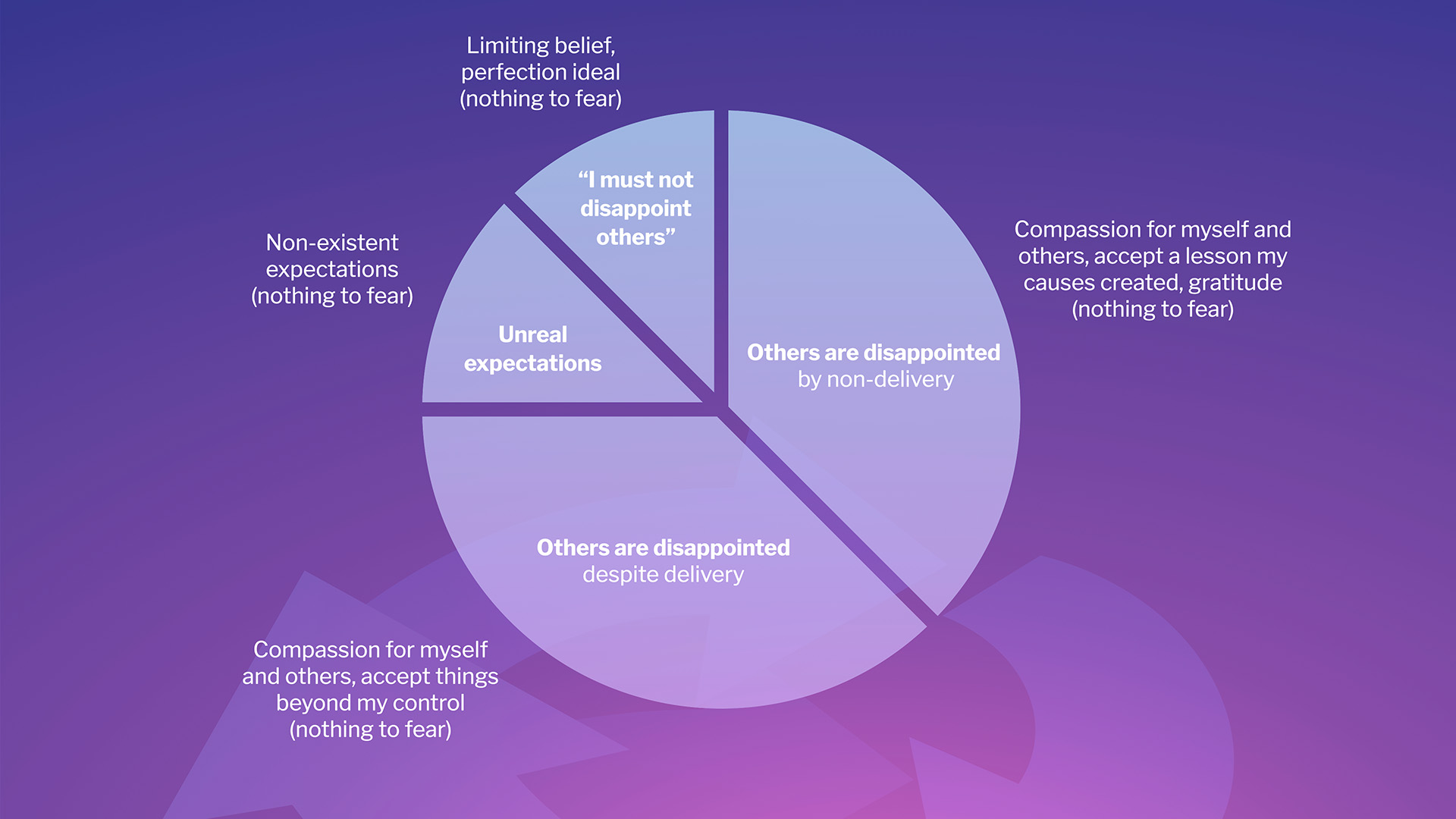
We normally try to function despite our fears, worries, and anxieties, to “overcome” them. Keep ourselves busy to distract our minds from thinking about them. Suppress them with alcohol or other substances. Jump into doing things scared, hoping surviving will get us rid of them.
Instead of looking into the causes of our fears and discovering most of them are imaginary. They arise only because our uncontrolled mental activity invites them.
Fears drain our energy, cloud reasoning, paralyze our actions and influence others. They contribute to stress, sleeping disorders, and, eventually, health issues. We do things for the wrong reasons and are unable to engage constructively.
Cortisol, the stress hormone levels remain elevated for hours. It exacerbates our experiences of both real and imaginary threats. Having primeval instincts “fight or flight” when there is a real danger, is out of our control. But fleeing or attacking imaginary foes is something we can definitely prevent.
Unless there is a tiger next to you, your fears are the virtual projections of your mind. The most flexible instrument in our possession. It can and must be trained to produce the responses we want.
How to extinguish fears
As per the A, B, C, D, E model of Cognitive Behavioral Therapy you dispute the beliefs that formed your fears. Reframe causes of fears to extinguish them.

You can extinguish any fear in the contexts you really look into. Fears of uncertainty, failure, losing a job, or loneliness. Up to the root of all your fears, the fear of death.
The first step is to investigate the causes of a specific fear you are experiencing right now.
For example, let’s unpack “the fear of disappointing others.”
Refresh understanding
Fear in Wikipedia:

In our example, as per Wikipedia, the fear of disappointing others “arises from a perception of danger.” Your imaginary expectation of what this danger is, mounts a preemptive “aggressive response.” Virtual, for now. The fear is also “modulated by your cognition and learning”. So let’s unlearn it.
If we look deeper, each fear is rooted in our misconceptions, exaggerated desires, unrealistic beliefs, painful memories, habits of being afraid, etc.
For example, a fear of losing a job may have an attachment to a lifestyle or a memory of bad times as a basis. Sometimes, minor fears are supported by underlying larger fears, seemingly latent at the moment. Fear of losing a job may be fueled by the fear of losing a house.
In our case, we are afraid of disappointing others.
The feeling of “disappointment,” as per Wikipedia, “follows the failure of expectations.” Again, your imaginary idea. Now it is about what others may think.
Next, let’s dive into each cause.
We look deeper to find… no plausible causes
Even before you start, ask yourself:
- if you can fix it – what to be afraid of?
- if you cannot fix it – what to be afraid of?
Makes sense, but doesn’t fix anything. The fear is still there. Because the causes are live and active.
So let’s proceed.
Analyze, and really look into each cause until you see that none of them are plausible. Exhaust all “threats” you anticipated in this situation.
It is to be clear, make sense to you — why there is nothing to fear behind any of them. Until you embrace, look forward to, and are genuinely grateful for each outcome.
Let’s unpack and reject each cause of a fear of disappointing others:

A simplified causes breakdown and their rejection:
- “I must not disappoint others”
It is a limiting belief, an imaginary ideal of perfection - Unreal expectations
Do others really have the expectations I imagined? Would they really get upset, especially, if their responses are rooted in compassion? - If others are disappointed despite my delivery
I will accept things beyond my control with compassion for others and myself - If others are disappointed by my non-delivery
My causes were the reason for non-delivery, but I will accept the lesson with gratitude as an opportunity to learn and improve, treat myself and others with compassion
All outcomes become precious opportunities. You can engage with the situation in a constructive manner, and look forward to all possible scenarios.
If you cannot find a perspective that exhausts all the causes, your outlook may require revision. Ultimately, even the concept of “I” is virtual, and open to review. if you establish a holistic compassion-based outlook, you will be able to look at things objectively, without distortions inherited from an egocentric worldview.
A web of causes
In our example, the breakdown of the causes may also include:
- history of problems with people you “disappointed”
- fears of bad outcomes
- attachments to good outcomes
- perfectionism
- clinging to a role or value (for example, “trustworthiness”)
Each is to be disputed and rejected as per the example above. If you find it hard, break it further down into manageable components, until each atomic cause is obviously not plausible.
Reframing past experiences

You need to reframe all of the memories that support this fear and its causes.
The pain behind your past experiences can be real, but your perception of the situation and the resulting negative response — are based on the old framing you used at the time. Such misperceived old records may be supporting your habit of fear in the resembling situations now.
These could be interactions with different people but in similar types of situations, and roles.
For example, look into the history of punishments for failing parents’ expectations.
If you leave a single case that still brings about a fearful reaction, it will contribute to your generic fear to disappoint others.
It is important to reframe each relevant past experience. Until your focus on these experiences brings about a desired response instead.
Apply and integrate new framing
Look at situations, other people, and yourself from a new perspective until you experience the desired response — the fear to disappoint others no longer arises.
Move from both directions:
1. Understanding
Explain to your mind repeatedly how the new framing changes your perception of the situation, and response. Ponder the benefits of the new framing and the disadvantages of the old one. Form a firm, sincere, and educated intention to give up unwanted reactions, and establish new, constructive responses.
2. Feeling
Try to feel, experience the new response. The positive state of mind the new framing to deliver.
Until both the understanding and the feeling sink in, and you do not have to force them.
A successful reframing usually produces a distinct experience of closure. You feel release, the contrasting state of mind, free from the grip of fear.
The real-life situations will still be testing the results achieved in an isolated practice setting. Use Emotional Hygiene to monitor and fully extinguish residual fears. If neglected, they may reverse the still unstable results of reframing.
If you are mindful and practice the new responses, they become natural. Old reactions no longer arise in the contexts that triggered them before. Your equanimity allows you to engage in these situations constructively. You are free from fears, worries, and anxieties.

